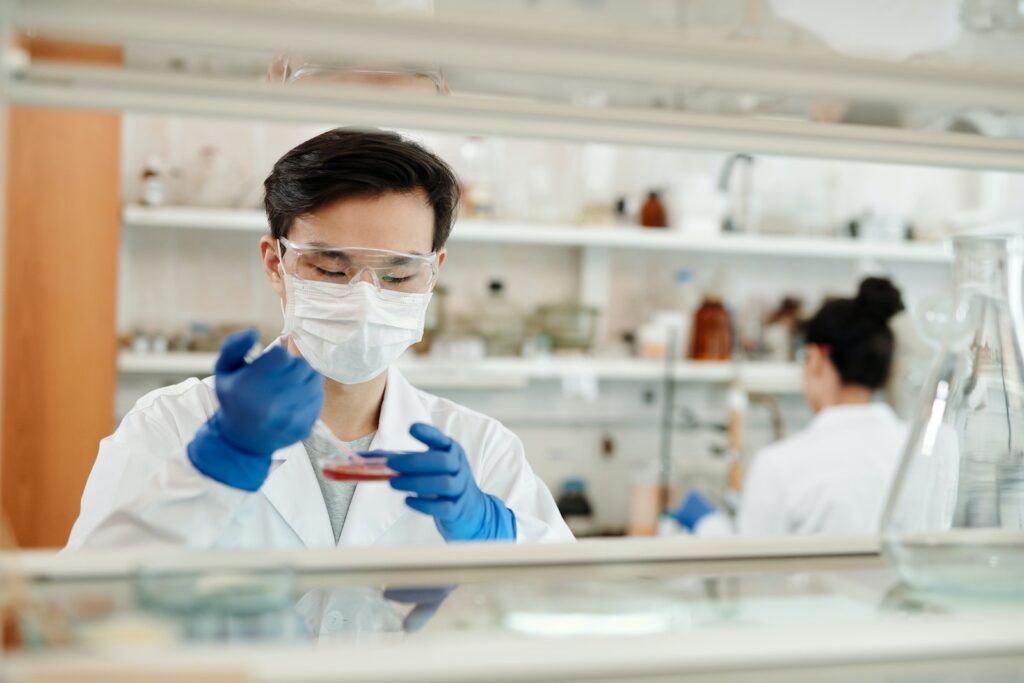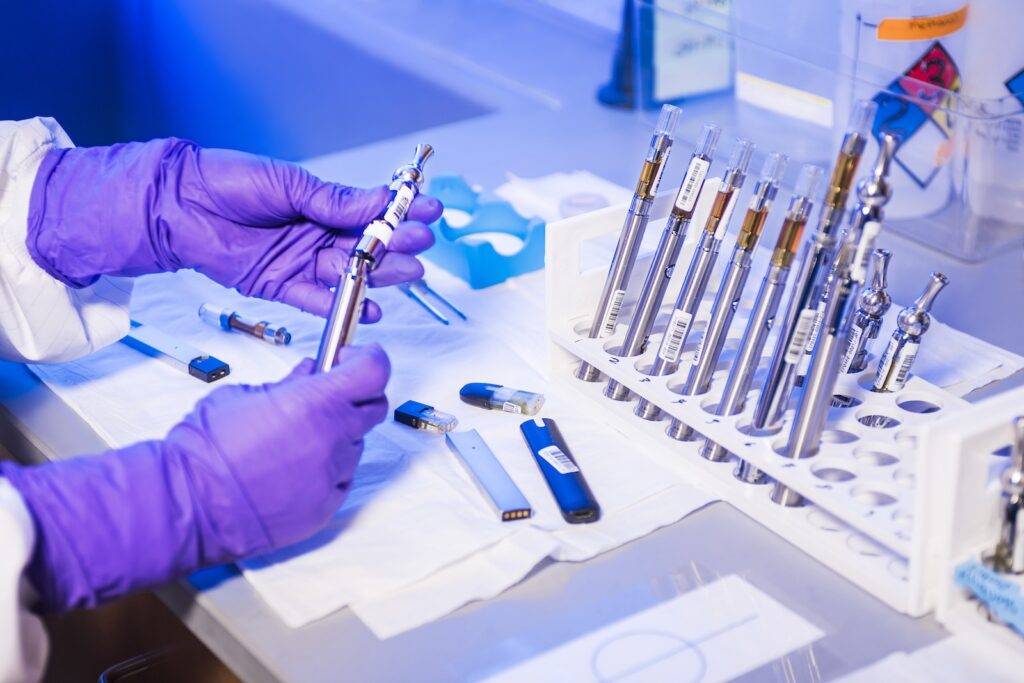Table of Contents
Introduction to Tissue Regeneration and Bioengineering
Tissue regeneration is a complex process that involves the replacement or repair of damaged tissue or organs in the body. It occurs naturally in some organisms, such as salamanders and starfish, but humans have limited regenerative capabilities.
Bioengineering approaches to tissue regeneration involve using materials and techniques to stimulate and enhance the body’s natural regenerative processes. These can include stem cell-based therapies, biocompatible scaffolds, growth factors, and gene therapy.
The field of tissue engineering has advanced significantly in recent years due to increasing collaborations between scientists from various disciplines such as biology, chemistry, physics, material science etc. Through these interdisciplinary collaborations researchers are able to develop new biomaterials for efficient delivery of therapeutics e.g., nanoparticles/microcapsules through injection or implanted patches/gels/scaffolds that help guide cell migration into adjacent tissues.
This integration of biological knowledge with cutting-edge technology offers promising potential for developing treatments for previously untreatable conditions such as spinal cord injuries or severe burns by replacing lost tissues; however there still remain significant challenges before any therapeutic applications reach clinical settings.
In summary,bioengineering approaches presents tremendous possibilities towards overcoming limitations associated with traditional medical treatments by employing technological advancements in conjunction with development of novel materials that help induce natural healing processes within our bodies paving way towards a more personalized patient centric care.
Advanced Strategies for Stem Cell-Based Tissue Repair
One approach involves genetically engineering stem cells to express specific growth factors or cytokines that promote tissue healing. For example, researchers have successfully used gene editing tools like CRISPR-Cas9 to modify mesenchymal stem cells (MSCs) so that they produce higher levels of bone-regenerating proteins. Similarly, adipose-derived stem cells (ASCs) can be modified to secrete anti-inflammatory molecules, which can help reduce inflammation following injury or surgery.
Another strategy is focused on optimizing the delivery of stem cells directly to the site of injury or damage. This may involve using biodegradable scaffolds – materials that support the growth and attachment of new tissue – as a vehicle for delivering stem cells. By incorporating therapeutic agents such as growth factors into these scaffolds, researchers hope to create more favorable environments for stem cell engraftment and differentiation.
In addition, research has explored ways in which different types of stem cells can work together synergistically to improve outcomes in certain tissues. One example is combining MSCs with endothelial progenitor cells (EPCs), which can promote blood vessel formation in damaged tissues by releasing angiogenic factors.
Overall,
advanced strategies for utilizing the power of stemcells offer great promise for improving tissue regeneration and repair capabilities
.
Biomaterial Approaches for Enhanced Healing and Regeneration
Biomaterials are critical components in the field of tissue engineering and regenerative medicine because they provide a physical support structure for new cell growth, as well as deliver important signaling cues to promote healing and regeneration.
One approach is to use natural materials such as collagen or fibrin that mimic the extracellular matrix (ECM) of tissues. These biomaterials can be functionalized with specific peptides or growth factors to enhance cell attachment and differentiation, leading to faster tissue repair. Additionally, synthetic polymers like polyethylene glycol (PEG) can also be tailored to provide unique properties such as mechanical strength or controlled release of therapeutic molecules.
A key consideration in using biomaterial approaches is ensuring biocompatibility – meaning that materials don’t cause negative reactions from cells or induce inflammation. Fortunately, many biomaterials have already been extensively tested for safety and efficacy in clinical applications ranging from wound dressings to artificial joints.
The ability of these materials promotes not only an enhanced healing process but has shown promise for more complex regeneration strategies. For example recent studies have demonstrated successful neural regeneration within injured spinal cord sites through implants composed largely of polycaprolactone (PCL), a naturally occurring polyester polymer
.
In conclusion, there’s no doubt that advances in biomaterial design will continue play a pivotal role advancing bioengineering approaches toward enhanced healing and regeneration towards more sophisticated means targeting different organs systems based on appropriate medical needs across various application domains
.
Recent Advances in 3D Bioprinting of Complex Tissues
One of the most exciting and promising fields in tissue engineering is 3D bioprinting, which allows scientists to create complex structures that mimic natural tissues by layering living cells on top of one another. This technology has advanced significantly over the past decade, with recent breakthroughs enabling researchers to produce even more intricate and lifelike structures.
Recent advances in 3D bioprinting have allowed for the creation of complex tissues such as blood vessels, liver tissue, and heart valves. One notable achievement was the successful printing of a functional kidney that could filter blood and produce urine in animal models.
The process involves creating a 3D model of the desired tissue using computer-aided design (CAD) software. Then, specialized bioprinters deposit layers of living cells onto a scaffold made from biomaterials such as hydrogels or synthetic polymers. The printer can also release chemicals called growth factors that direct cell behavior – like telling stem cells to differentiate into specific types of tissue.
The success rate for these printed tissues depends largely on their ability to integrate with existing tissues once transplanted into patients. However, new techniques are being developed to improve this integration by incorporating different types of supporting cells or vascularization systems within the structure itself.
Looking forward, researchers hope that 3D bioprinting will lead to advancements in personalized medicine where doctors can print replacement organs tailored specifically to individual patients’ needs – reducing rejection risk and improving outcomes overall. While there’s still much work left before this becomes a reality for everyday people worldwide , recent progress indicates we’re headed towards an exciting future
.
In conclusion,
Recent advances in 3D bioprinting show great promise for revolutionizing regenerative medicine through increasingly sophisticated designer-tissue fabrication capabilities
.
With further research and refinement, this technology has the potential to transform healthcare by enabling the creation of complex tissues tailored specifically to individual patient needs – reducing recovery times and improving outcomes overall.
Innovative Gene Therapy Techniques for Tissue Engineering Applications
Gene therapy is an emerging field in tissue regeneration which involves the delivery of genes to target cells for therapeutic benefit. Gene therapy has shown great potential in treating genetic disorders and other diseases, including cancer and cardiovascular disease. Innovative gene therapy techniques are now being developed for tissue engineering applications that could revolutionize how we approach tissue repair.
One such innovative technique is the use of viral vectors as a gene delivery system. Viral vectors offer many advantages over traditional non-viral methods, including high transduction efficiency and stable long-term expression of the delivered gene. Adeno-associated viruses (AAVs) have emerged as one of the most promising vector types due to their ability to efficiently infect a wide range of cell types without causing harm.
Another promising technique is CRISPR/Cas9 genome editing, which allows researchers to selectively modify genomic DNA at precise locations within the cell nucleus. This technology has been used successfully in animal models for correcting genetic mutations associated with disease or creating new modified organisms.
In addition to these tools, advances in stem cell biology have led to genetically modifying stem cells with specific genes directly linked with homing capability or differentiation capacity into desired tissues and cellular compartments
The application of these innovative gene therapy techniques holds great promise for advancing regenerative medicine approaches. Not only can it result in better treatments but also lead us towards precision-engineered tissues hence resulting in healthier patients overall.
In Conclusion : Innovative Gene Therapy Techniques are proving vital steps towards achieving successful outcomes from Tissue Engineering Applications by ensuring higher efficacy levels without compromising on safety standards.
Future Directions and Challenges in Advancing Bioengineering Approaches to Tissue Regeneration
The field of bioengineering has made remarkable strides in developing innovative approaches for repairing and regenerating damaged tissues. As research continues, several future directions and challenges have emerged that require further investigation.
One area of active exploration is the use of bioactive molecules such as growth factors or cytokines to enhance tissue regeneration. These molecules can be incorporated into biomaterial scaffolds or delivered as gene therapies to promote cell proliferation and differentiation. However, there is much work needed to optimize the delivery methods and dosages required for successful therapeutic outcomes.
Another important avenue for advancing tissue engineering involves improving our understanding of cellular interactions within engineered tissues. By better characterizing cell signaling pathways and extracellular matrix dynamics, researchers will be able to design more effective strategies for promoting tissue development and integration with host tissues.
Additionally, emerging technologies like organ-on-a-chip models are providing new tools for studying complex biological processes involved in tissue regeneration at a microscale level. These models allow researchers to recreate physiological environments that mimic real organs, making it possible to evaluate potential drug candidates or monitor disease progression with higher accuracy than traditional animal models.
However, numerous challenges remain on this path forward towards advanced bioengineering approaches including; = ‘- Ensuring regulatory compliance’; ?>= ‘- Developing standardized protocols across lab settings’; ?>= ‘- Addressing ethical concerns about the creation of artificial life forms.’;?>= ‘All these issues need attention if we are going achieve success in creating novel therapeutic treatments’?>.
In conclusion future advancements In Bio-engineering techniques hold immense promise when it comes to surpassing limitations posed by conventional medical therapies that rely entirely on transplantations from donors leading to long waiting times and compatibility issues. It sure is an exciting time with so many advances being made that could change the face of medicine as we know it.




